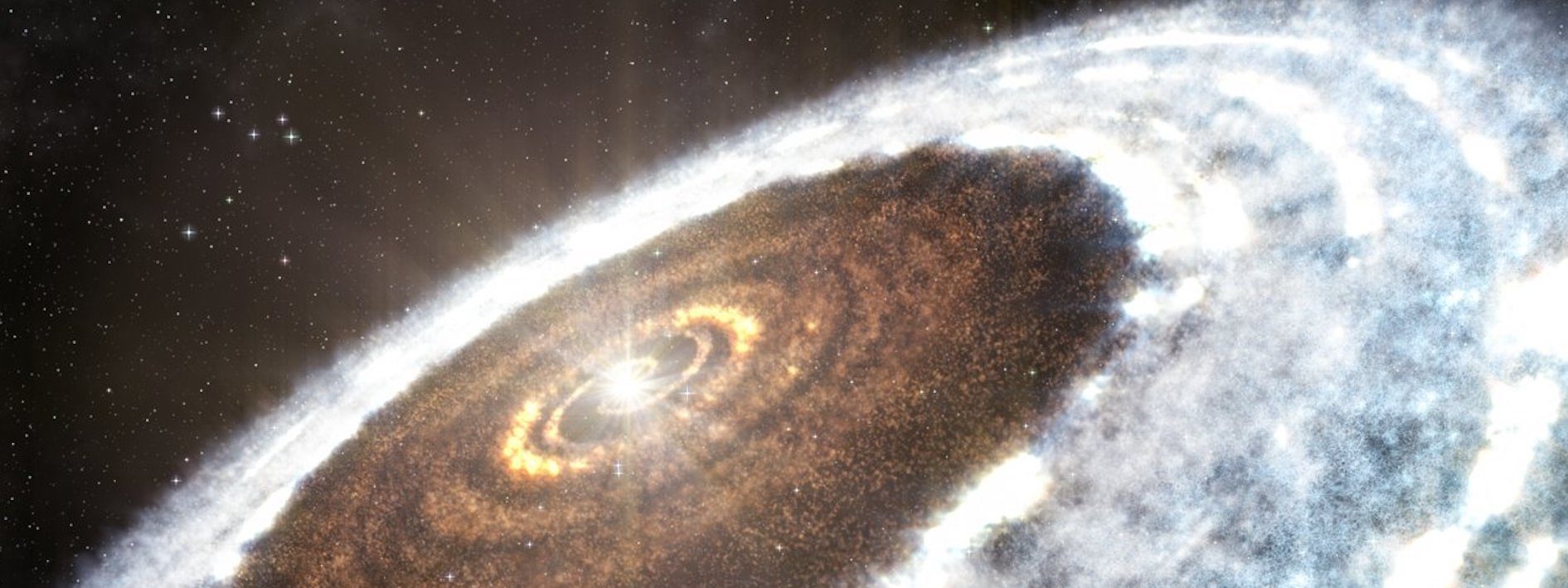Paper: Astronomical context of solar system formation from molybdenum isotopes in meteorite inclusions.
Featured image: Artistic impression of the protoplanetary disk. Image used with permission from Wikipedia (A. Angelich).
Authors: Gregory A. Brennecka, Christoph Burkhardt, Gerrit Budde, Thomas S. Kruijer, Francis Nimmo, Thorsten Kleine.
If you ask a cosmochemist what the oldest objects in the solar system are, they will swiftly answer the Calcium Aluminium Inclusions (CAIs), a small light-coloured inclusion within primitive meteorites known as Chondrites (see figure 2C). However, if you ask what event in the solar system evolution CAIs correspond to, it is a more challenging question. Previously, CAI formation was associated with the various evolutionary stages of our Sun. However, as the timescale of evolution of Sun, calculated to be around 1 million years by observing Sun like stars, is longer than the CAI forming period (~ 40,000 – 200,000 years), the association between CAI formation and the early stages of our Sun is not always clear. In a quest to put the CAI formation in an astronomical context, a recent study from Brennecka et al. analysed CAIs present within various Carbonaceous chondrite meteorites and linked the CAI formation to a specific stage in the Sun’s evolution.
Continue reading “Capturing Early Sun within meteorite inclusions”

